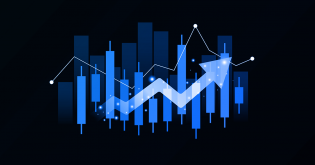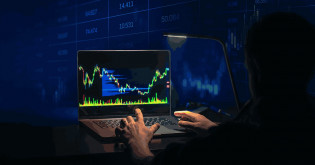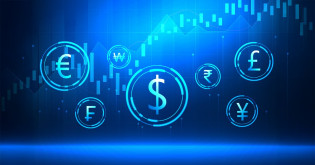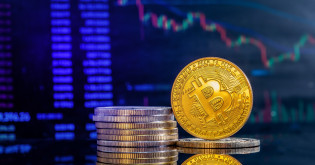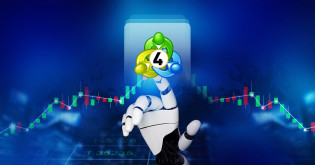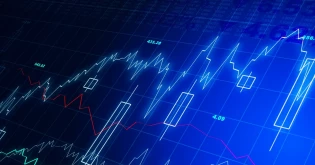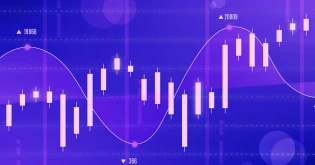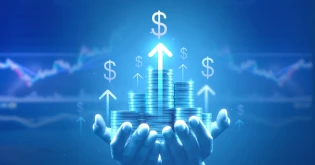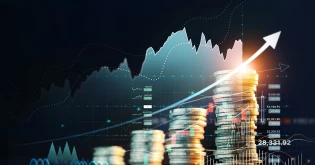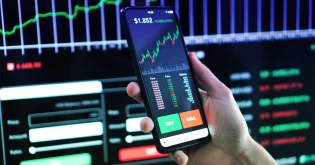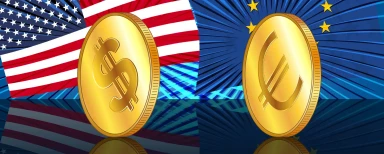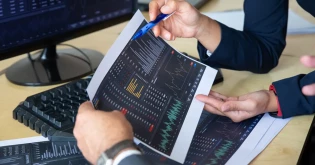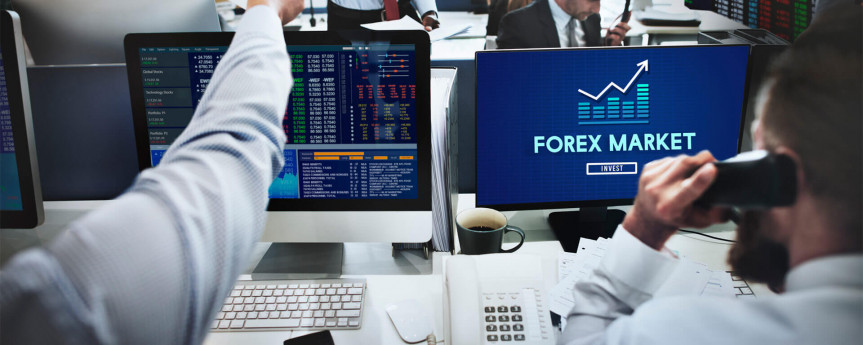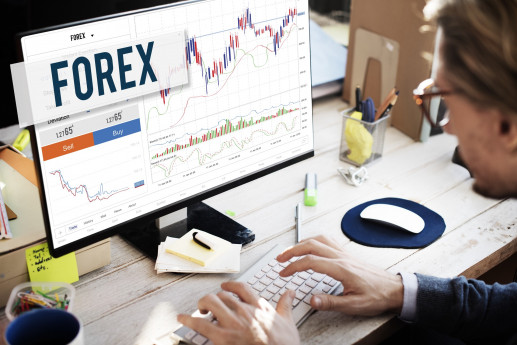-
The interest rate is one of the strongest variables that determine the price of the currency in the forex trade. Being a novice and wanting to learn how currencies move around, or a trader who wants to know more about the underlying mechanics in the market, interest rates are the heartbeat of the forex prices.
They affect all things, including the direction in which the exchange rates go and how volatile the forex markets are. This guide will deconstruct the meaning of interest rates in forex trade, their effect on currencies, and the strategies traders use to take advantage of changes in interest rates.
What Is Interest Rate Trading?
Interest rate trading in forex involves taking positions depending on differences (or expectations of differences) in interest rates between two countries. Each currency within the forex market is associated with its country's central bank, which sets an interest rate to control inflation and grow the economy.
If a country raises its interest rate, the currency will often strengthen, as investors look for higher returns. If a country lowers its interest rate, the currency may weaken, as capital flows to the higher interest rate country. Because of this relation, interest rate trading is a very important concept to understand how global economies interact within the forex market.
How Interest Rates Affect Forex Trading
The value of currency is greatly dependent on interest rates. The announcements of rates, meetings of central banks, and news releases on the economic situation are usually followed by traders to indicate what the monetary policy might be like in the future.
An increased rate of interest will lead to the improvement of returns to investors, who will be drawn to invest abroad and increase currency demand. Conversely, lowering the rate can cause the currency to lose strength due to low demand.
In illustration, when the U.S. Federal Reserve raises its rates and the European Central Bank maintains the same rates, the U.S dollar is bound to appreciate relative to the euro because the interest rate difference is broadened.
Interest Rate Differential in Forex
In Forex, the interest rate differential is the difference in interest rates between two currencies in a pair. It is one of the primary reasons to buy or sell a currency in a pair.
For example, if the interest rate of one currency is 5%, and the interest rate of another currency is 2%, the interest rate differential is 3%. Many traders are looking to profit from this interest rate differential using strategies like the carry trade. A carry trade is where a trader borrows currency in the currency with the low-interest rate and invests it in the currency with the high-interest rate, profiting from the interest rate differential.
While this may sound easy, the volatility involved in Forex can lead to fluctuations in the exchange rate that can offset potential profits. This is especially important when considering risk management in Forex.
The Power of the Interest Rate Differential in Forex
The forex interest rate differential is a concept that simply states the difference between the interest rates of the two currencies in a forex pair. This differential is a major factor that attracts forex traders, as it has given birth to a trading strategy known as the Carry Trade.
- Positive Differential: In case you simultaneously buy a currency with a higher interest rate and sell another with a lower interest rate, e.g., buying the Australian dollar and selling the Japanese yen (AUD/JPY), your account will be credited with "positive carry." This means you will receive the interest rate difference or 'rollover' payment every day for as long as you have the position open overnight.
- Negative Differential: On the other hand, if you are long on the low-interest currency and sell the high-interest one, you will incur a "negative carry" and will have to pay the interest rate difference.
The Carry Trade is attractive due to its dual profit possibilities: one from the interest rate differential and the other from the price movement. However, this strategy is very dependent on sudden changes in market sentiment or the volatility within the forex markets, which makes proper risk management in forex trading very important.
Forex Interest Rate Trading Strategy
Constructing a forex interest rate trading strategy necessitates a profound knowledge of the monetary policy decisions and implications. It is a few examples of how traders use the interest rate information in their favor strategically:
1. Carry Trade Strategy: This is where a trader first borrows from a currency with a low-interest rate and subsequently invests in one with a higher rate. The profits made are from the interest rate differential.
2. Fundamental Analysis: The forex trader monitors global economic indicators as well as central bank policies to anticipate the shift in rates.
3. News Trading: The trader takes the stand of opening and closing positions around interest rate announcements or economic news releases that may create volatility in the market.
4. Hedging: The dealer deploys interest rate evaluation to safeguard against currency risks in international trade or investment transactions.
Each of the above-mentioned strategies necessitates a high level of global economic development monitoring and a corresponding prompt decision-making on a forex trading platform to seize the chances.
Key Economic News Events That Drive Rates
Interest rates are not a phenomenon that occurs in a vacuum; that is, they are a direct reaction to economic news in a country and the mandate of the central bank to have stable prices and be able to employ everybody. Traders who trade on interest rate movements are highly sensitive to the following announcements:
1. Central Bank Rate Decisions and Statements
The most evident ones are the regular meetings during which the central banks announce a change in the benchmark rate. The following statement and press conference are also significant. The language is examined by traders to determine whether it portrays a hawkish (indicating that the rate will increase in the future) or a doveish (indicating that the rate will decrease in the future or even stop) indication. The tone of what to do in the future is frequently better received by the market than the rate change itself.
2. Inflation Data (CPI/PCE)
The largest determinant of interest rate policy is inflation, which is measured with the help of such indexes as the Consumer Price Index (CPI). Once the inflation increases beyond the target of the central bank, the bank has no option but to increase the rates and tame the economy. High inflationary figures are, hence, a positive indicator of a currency.
3. Employment Data (NFP)
A good labor market where there is a low unemployment rate and an increasing wage rate (as in the case of the Non-Farm Payrolls in the US) implies a good economy that can cause inflationary pressures. A healthy jobs report tends to boost the chances of a hike in the rate, thereby enhancing the currency.
4. Gross Domestic Product (GDP)
GDP is the most comprehensive indicator of the economy of a nation. Long-term and robust growth is justifiable, such that a higher interest rate makes the currency appealing. On the other hand, when the GDP is shrinking or low, the central bank can reduce the rates to encourage lending and expenditures.
Risk Management in Interest Rate Trading
Trading based on interest rate levels can be both profitable and risky. After a rate announcement, currency values can change quickly, and leverage will increase any gains or losses.
To manage risk in forex, be sure to set stop-loss orders, limit position sizes, and refrain from over-leveraging. Traders, in general, should diversify and not trade solely based on interest rate speculation. Combining what you learn about interest rates with other forex trading strategies allows for balanced decision making and sustainability in the long run.
Integrating Interest Rate Analysis into Your Trading
The proper use of interest rates in trading requires the integration of both fundamental and technical analysis, with the forex trading platform being your portal to both price action and economic data.
1. Fundamental Context
To begin with, check the economic calendar for the upcoming central bank meetings and the important data releases. Formulate a hypothesis: do you think the central bank will increase, decrease, or maintain the same level of interest rates, taking into account the current inflation and growth trends? Your trading direction should be consistent with the fundamental view. For example, if you expect a rate increase, you would then be looking to buy the currency of that country.
2. Risk Management and Position Sizing
The forex market usually experiences a lot of volatility due to the interest rate announcements. Therefore, it is necessary to practice strict risk management in forex. Do not risk more than a small percentage (for instance, 1-2%) of your total capital on any single trade. For Carry Trades, which are by nature longer-term, keep in mind that there is a possibility of sudden policy changes or an increase in global risk aversion, which can lead these trades to unwind quickly.
3. Choosing a Broker
When implementing an interest rate trading strategy in forex, such as the Carry Trade, your broker is an important consideration. You want a broker who offers competitive swap rates (the overnight interest payment) on the pairs you are trading. CapitalXtend is a regulated, reliable forex trading platform that offers an appropriate environment and tools for carrying out interest rate-based strategies.
For Forex Trading Beginners
If you’re new to trading, understanding interest rates provides a strong foundation for market analysis. Learn what forex trading is, study how currencies respond to policy decisions, and practice trading in a demo environment before risking real money.
Many forex trading for beginners guides emphasize patience, discipline, and continuous learning — especially when it comes to interpreting global monetary policies. The more you understand how interest rates move markets, the better equipped you’ll be to identify profitable opportunities and manage risks.
Conclusion
In the forex market, interest rates are considered to be one of the most important factors that determine not only the major trends but also the minor price fluctuations that happen daily. If traders learn how these interest rates work and apply smart tactics, they can take advantage of the situation and lower the risks.
CapitalXtend is a forex trading platform where traders can operate effortlessly and systematically, always benefiting from real-time market data and seamless execution.
Contact our experts now and start trading in a smarter way, also learn about the ways in which interest rate changes can be beneficial for you.
FAQs
1. What is interest rate trading in forex?
It is a currency exchange that depends on the interest rate differential between the two countries.
2. How do interest rates affect currency value?
The currencies of the countries with higher interest rates become stronger, while those of the lower interest rates become weaker.
3. What is the interest rate differential in forex?
It is the difference between the interest rates of the two countries that determines the movement of the currency pair.
4. What’s a carry trade in forex?
One borrows in a low-interest currency and invests in a high-interest currency, thus earning the difference in rates.
5. Why is economic news important in forex trading?
Economic news gives the market signals of possible rate changes, and consequently, the market volatility will create trading opportunities.
6. How can beginners trade based on interest rates?
The beginners can start with the demo trading, keep a close watch on the central bank news, and apply the risk management strategies.
